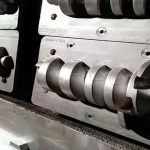Regarding 3D printing, I believe we are all familiar and familiar with it. 3D printing is actually a kind of rapid prototyping technology. It is based on digital model files, using powdered metal or plastic and other bondable materials to construct objects by printing layer by layer. 3D printing is also called additive manufacturing. In recent years, we have all seen the rapid development of 3D printing technology and its momentum is booming. So, what are the four major industry sectors that are deeply affected by 3D printing?
1. Industry deeply affected by 3D printing: construction industry
3D printing has rapid prototyping, saving man-hours and costs, and precise manufacturing. In recent years, 3D printing buildings have also emerged. For example, in July last year, 3D printed modular new material villas appeared in Xi’an, and the builder completed the construction of the hardcover villas in three hours. .
In order to control marine pollution, the well-known Belgian architect Vincent Callebaut proposed a new urban design concept: 3D printing conch-shaped buildings from plastic waste on the ocean to form a marine city.
2. Industry deeply affected by 3D printing: the automotive industry
3D printing has the characteristics of simplifying the production of complex parts, changing from traditional subtractive manufacturing to additive manufacturing, and shifting the focus of the molding process to the micro-molding control of the same layer and adjacent layers, thus bringing great development advantages to the development of automotive molds . It can be said that 3D printing greatly shortens the development and production cycle of automobile molds, improves productivity, and achieves low production costs. At the end of 2015, the United States held an automobile 3D printing competition. The LM3D Swim launched by Rock Company, the body printing material is made of 80% ABS plastic and 20% carbon fiber. The car body has achieved significant weight reduction and won the championship. In addition, Volkswagen and Ford have successively developed 3D printed auto parts to promote the application of 3D printing in the automotive industry.
3. Industries deeply affected by 3D printing: medical industry
Due to the complexity of organs, traditional processing methods can no longer meet human needs, and the introduction of 3D printing technology into the production of artificial organs not only solves the problem of dimensional accuracy, but also does not have to worry about the issue of production speed. 3D printing will not only help break through existing medical problems, improve the level of medical technology, but also bring good news to the global medical industry. For example, the University of Pennsylvania team launched a 3D printed eyelid using chip technology to simulate the function of the human eye. The chip contains multiple microfluidic channels so that corneal cells can grow like in the human body. A research team from the University of Groningen in the Netherlands has developed a new type of 3D printed tooth that can kill bacteria living in the mouth and prevent tooth decay.
4. Industries deeply affected by 3D printing: aerospace
Using advanced manufacturing technologies such as 3D printing to achieve rapid manufacturing of aircraft parts, greatly reducing manufacturing costs and improving manufacturing efficiency. In November 2015, the well-known 3D printing company Stratasys United Airlines Aurora Flight Sciences released the world’s first 3D printed jet-powered unmanned aircraft at the Dubai Air Show. In October 2014, a team of British enthusiasts used 3D printing technology to create a rocket.
The emergence of 3D printing has brought a huge impact on all walks of life, saving production costs, improving production efficiency, and promoting industry innovation. At present, China is actively promoting the development of 3D printing technology. Global Plastics pointed out that as the country introduces a series of corresponding Supporting policies create a good technology and market atmosphere for the industry. Companies actively research and develop 3D printing technology to shorten the gap with the international level. China’s 3D printing industry will usher in a broad space for development.
Five advantages of 3D printing mold making:
- 1. Shorten the mold production cycle
- 2. Reduced manufacturing costs
- 3. The improvement of mold design adds more functionality to the end product.
- 4. The optimization tool is more ergonomic and improves the minimum performance
- 5. Custom molds help realize the customization of the final product
Link to this article:Four major industry sectors deeply affected by 3D printing
Reprint Statement: If there are no special instructions, all articles on this site are original. Please indicate the source for reprinting:Mold Wiki,Thanks!^^

